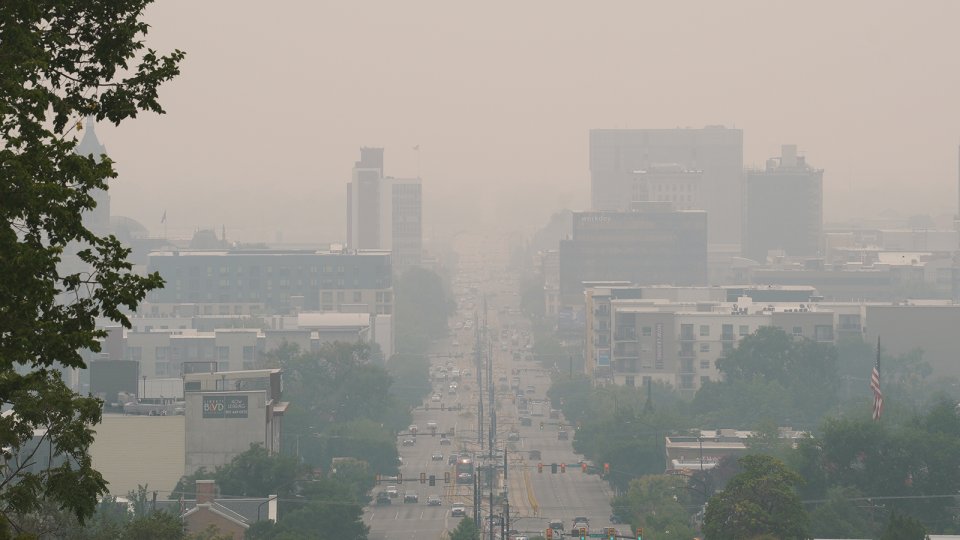Utah to reduce indoor air pollution in schools, public buildings from wildfire smoke events through EPA grant
State to receive $854k for wildfire smoke preparedness projects in target underserved areas
SALT LAKE CITY – The U.S. Environmental Protection Agency (EPA) is expected to award $10.67 million in grant funding to nine selected recipients across the country to enhance community wildfire smoke preparedness. Of these recipients, the Utah Department of Environmental Quality (UDEQ) is anticipating a $854,609 grant to improve community resiliency to wildfire smoke through enhanced deployment of air quality monitors and alerts.
UDEQ will be working with partners to enhance communities’ resilience to wildfire smoke in target underserved areas. The plan will include deploying indoor and outdoor PM2.5 and CO2 sensors at public schools, developing air quality alerts, and distributing air cleaners and filters to public schools, preschools and residents. With more than 672,000 kids enrolled in Utah public schools, developing wildfire smoke preparedness programs improves indoor air quality and reduces public health risks for many students.
“Utah is one of the most fire-prone states in the American West, communities who once seemed unlikely to experience wildfire are now front line communities,” said EPA Regional Administrator KC Becker. “This grant will provide important resources to communities to build awareness and develop plans for wildfire smoke events that will protect public health and save lives.”

Additional states in EPA Region 8 receiving funding for wildfire smoke preparedness include Montana and Colorado, which will be awarded to their public health entities:
-
The Colorado Department of Public Health and Environment has been selected to receive $1.89M to design and implement a state-wide program to provide outreach, education, and training for local community partners on how to prepare for, and respond to, the public health threat of wildfire smoke.
-
The Montana Department of Public Health and Human Services has been selected to receive $610,000 to engage a variety of partners to increase wildfire smoke awareness, create and pilot a clean air shelter recognition program in six communities for easy replication in other high need areas, create culturally appropriate and tailored messaging on wildfire smoke and air quality, and provide training to building and facility managers on HVAC maintenance and importance of good indoor air quality.
Wildfire smoke is a significant public health problem, especially in western states where large wildfires are becoming increasingly more common. Smoke plumes can adversely affect a large portion of our population, with health impacts ranging from eye and throat irritation, to asthma attacks, cardiovascular events, and even premature death. Local officials often advise people to stay indoors during a smoke event. However, some of the smoke from outdoors can enter homes and buildings and can also make indoor air hazardous to breathe. Because buildings vary in their design and construction, they also vary in their levels of protection against wildfire smoke.
These grants are provided under Section 103(b)(3) of the Clean Air Act as supplemented by authority provided in the 2022 Consolidated Appropriations Act and the 2023 Consolidated Appropriations Act to fund abatement activities.
Learn more about these grants.
Learn more about Wildfires and Indoor Air Quality.
